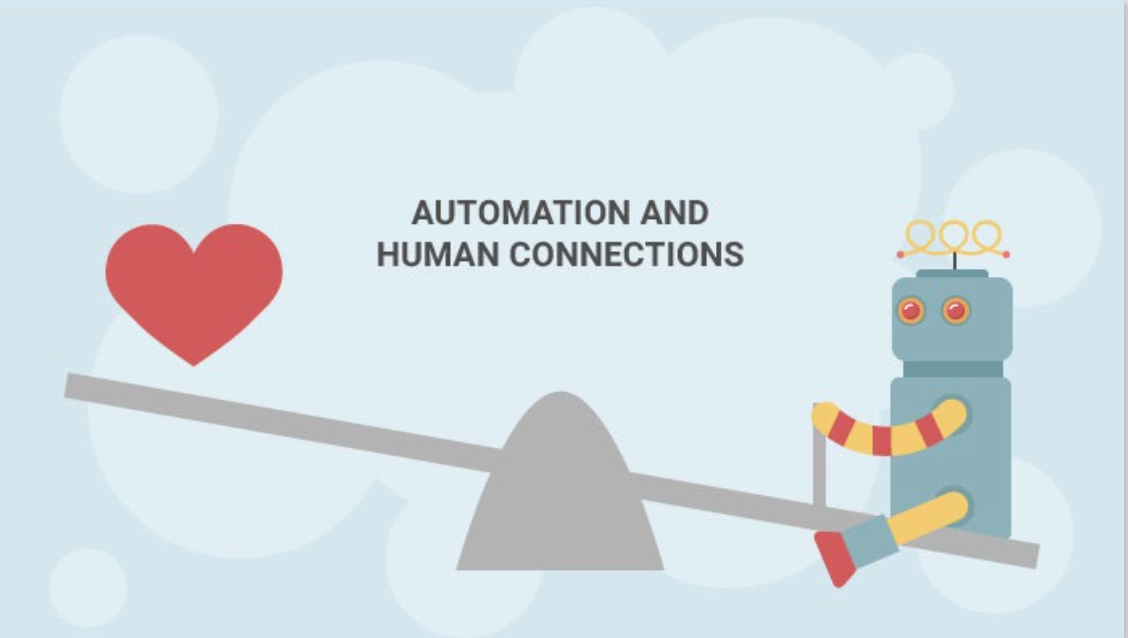
post
June 15, 2016
Why Digital Customer Service must Balance Automation & Human Connection
This guest post is written by Stephan Delbos, Editor & Content Manager at Brand Embassy.
The hype surrounding Facebook’s chatbot announcement made it seem like some people were envisioning a Transformers-like takeover of customer service by bots. The introduction of chatbots into digital customer service is great because bots are fast and very efficient. But humans still have a huge role to play in customer service and always will. It might be less dramatic than a chatbot coup d’état, but the future of customer service lies in the balance between automation and human connections. Knowing the undeniable advantages of chatbots and making use of them, while also giving human agents the freedom to connect with customers will be the key to providing responsive, personalized service that delights customers and inspires their loyalty.
Many commentators look back on pre-internet customer service as the good old days, with real people helping people and developing long-term relationships. The internet, the narrative goes, put up a wall between brands and customers, making digital customer service potentially faster, but far less personal. The solution to that conundrum certainly isn’t to stop using technology — chatbots and digital customer care can be key differentiators, because they allow brands to streamline and simplify customer service at scale.
But we’ve reached a tipping point, when everyone is starting to realize the importance of customer experience, and that brands need to step out from behind that digital wall. 83% of U.S. consumers prefer dealing with human beings over digital channels to solve customer services issues, according to new research from Accenture. It’s not that technology is suddenly useless. On the contrary, chatbots and advanced customer service technology are more important than ever before. In fact, the smartest brands will actually use automation to put the human back into the customer service equation.
The beginning of a beautiful friendship
We love technology and we’re big fans of innovation. Anything that could possibly help brands serve their customers better sounds fantastic to us. But technology alone can’t provide excellent customer service, because customers want personalized human connections. That’s why 52% of consumers have switched brands in the past year due to poor customer service, which includes brands that made it difficult to get in touch with a human customer service agent. Bots are invaluable, especially when customers also have the opportunity to speak with an empathetic, responsive human.
Think of the popular stories you’ve heard about great customer service, from Zappos to Netflix or Hilton. It’s hard to imagine these being orchestrated by chatbots alone. But it’s also hard to imagine this extraordinary level of customer service being possible if agents didn’t have advanced technology at their fingertips.
The advantages of automation in customer service are too large to ignore. We have the technology, so why not use it? The key is knowing when to use automation and when to rely on humans. Doing so requires a clear-eyed consideration of what humans do best, and what should be left up to bots.
What should be automated?
Great customer service in the 21st century just isn’t possible without technology. Chatbots have all the advantages of computers: they’re fast and they’re rational. In the future, contact centers will take advantage of all that chatbots have to offer, but will only rely on them to do the things they’re best at, the 1st-level contacts for repetitive questions and issues that are easy to solve. There are exciting opportunities for brands who know how to make automation work for them.
As a basic bottom line, all brands should offer proactive live chat. Automated chatbots will seek out customers browsing the website and contact them based on what they are looking at. This kind of proactivity has positive effects on sales and customer satisfaction, but is often too much of a burden for human agents to take on, especially when there are many customers and a small team. Bots can free agents to do more important things.
Intelligent ticket routing is another vital feature of automated customer service. Intelligent routing, particularly in digital customer service where expectations for quick response and personalization are high, is a great way to utilize the best of both worlds. Brands have automation to select the best possible customer service agent, and a human touch to personalize the experience. It’s a question of using technology to lead customers to human agents if and when they need it.
What needs a human touch?
In the future, human agents will focus on complex issues, and will use their emotional intelligence and instinct whenever they can. Essentially, technology will take care of the technical stuff, freeing up human agents to do what they do best. This will be a systematic change in the way we think about and execute digital customer service.
To cultivate the human touch in digital customer service, brands have to do three things:
- Recognize the importance of empathy
- Make personal connections
- Provide repeat contact points
83% of American customers who have switched brands say that better live or in-person customer service would have inspired them to stay. Customer service should be less about “satisfying” customers and more about moving them smoothly through the service experience time after time. But even earlier, before making a sale, chatbots can get in touch with the customer and guide them along. Bots take care of the easily solvable problems, leading customers to qualified agents who can then develop and sustain relationships with customers over time, which means increased loyalty and distinguishing customer experience.
It’s time we brought humans back into customer service, but that doesn’t mean abandoning technology. Brands that achieve a balance between automation and human connections will succeed by utilizing the advantages of technology without neglecting age-old human contact.
About the Author
Stay up to date
Latest Articles

OneReach.ai Named a Leader in the IDC MarketScape for Conversational AI Software 2023
December 18, 2023



